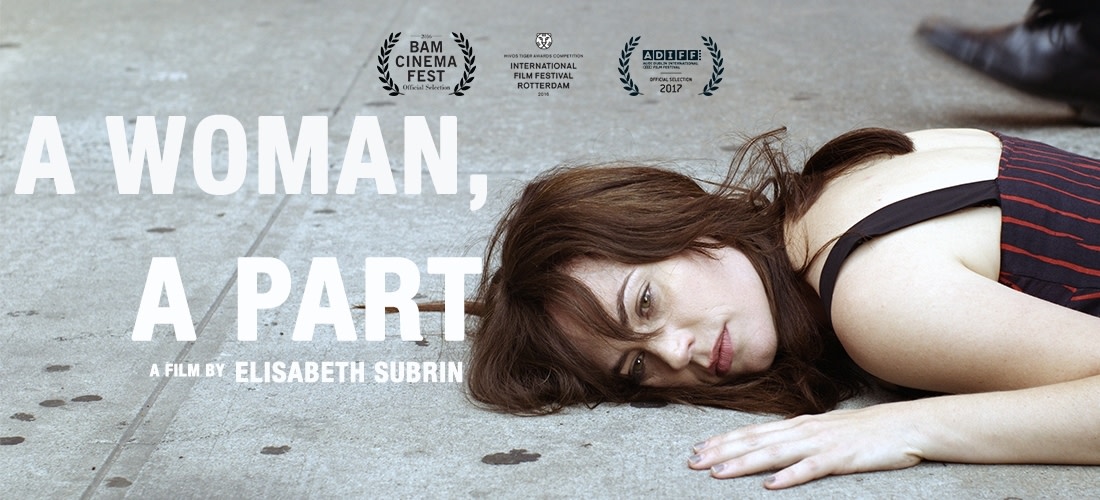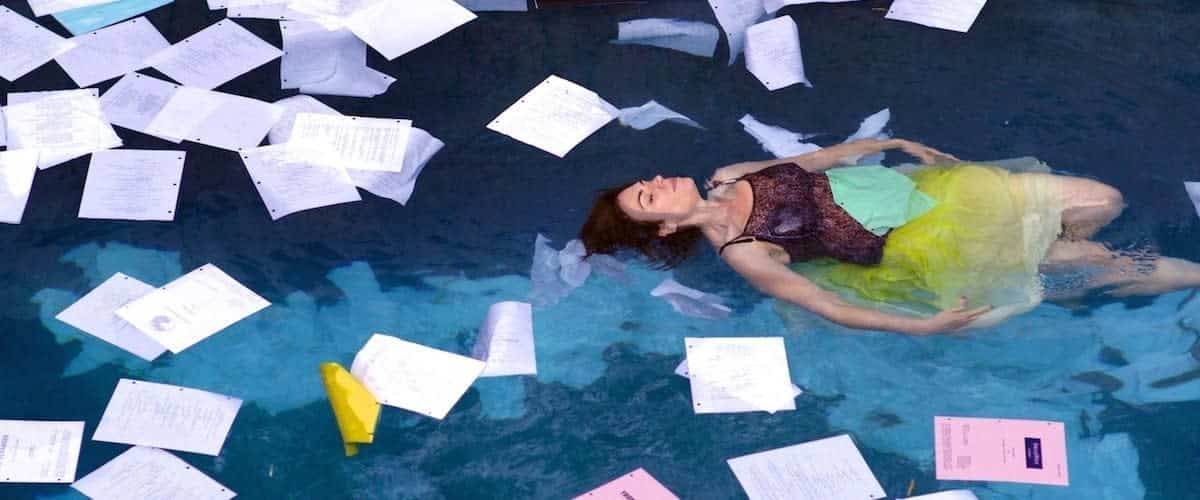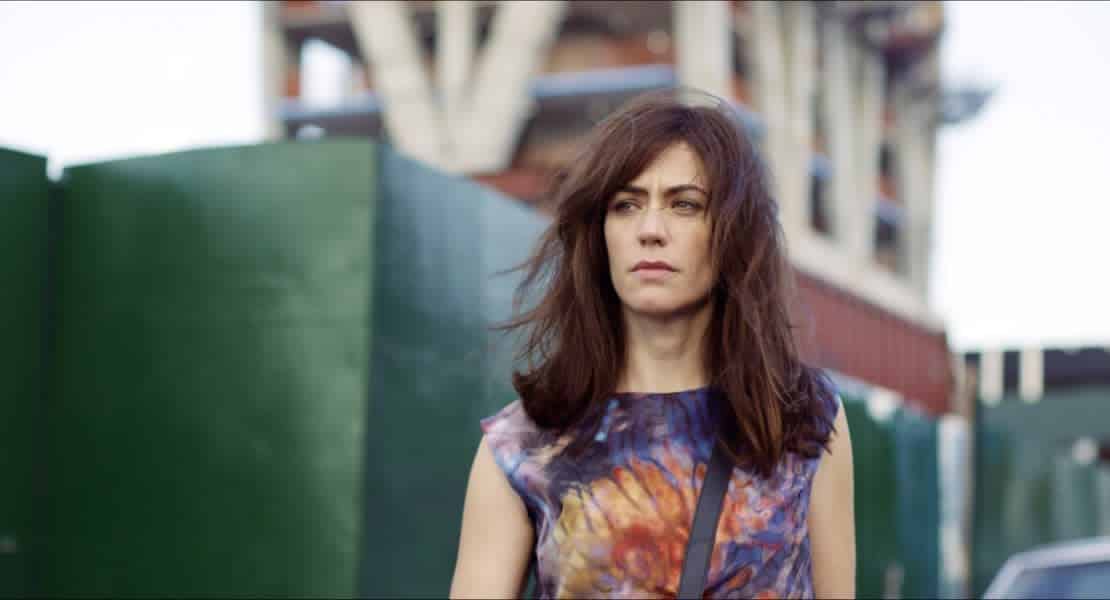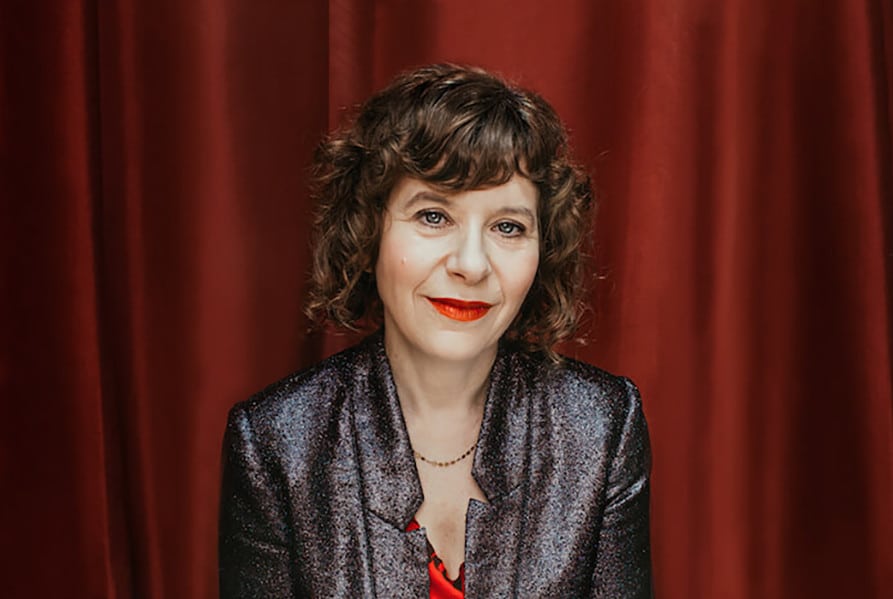Famosa por sus premiados cortometrajes e instalaciones experimentales, la última obra de Elisabeth Subrin adopta un enfoque más narrativo. Una mujer, una parteprotagonizada por Maggie Siff (Mad Men, Miles de millones), cuenta la historia de una agotada actriz de Los Ángeles que regresa a Nueva York para reinventarse. Es una continuación del trabajo que Subrin ha hecho durante años: criticar cómo se retrata a las mujeres en los medios de comunicación y las barreras de "trabajar siendo mujer" en cualquier industria creativa.
Subrin cree que preocuparse por las actrices es un acto político. Como escritora y conferenciante, debate regularmente sobre la relación entre feminismo y cine. En su Tumblr, titulado acertadamente A quién le importan las actricespublicó un manifiesto que dice: "Los papeles que interpretan las actrices enseñan a los niños a ser. Estos niños se convierten en los adultos que dan forma al mundo. Los papeles que interpretan las actrices dictan al mundo entero lo que deben ser las mujeres". No hace falta ser Feminista 101 para señalar las implicaciones del mundo en que vivimos debido a las limitaciones impuestas a las representaciones femeninas."
Una mujer, una parte lucha contra la actitud despectiva que Hollywood tiene hacia las actrices. Si nadie va a preocuparse por ellas y por lo que los papeles femeninos significan para la sociedad en general, Subrin lo hará. El resultado es una película aparentemente convencional en su argumento, pero que desentraña los diversos personajes femeninos de forma revolucionaria.
Tras su estreno en el Festival Internacional de Cine de Rotterdam en febrero de 2016, Una mujer, una parte se estrenará más ampliamente en los cines de EE.UU. este mes. Hemos hablado con Elisabeth Subrin para saber más sobre su película, las dificultades de hacer una obra explícitamente feminista y consejos para las cineastas que quieren hacerse un hueco en los festivales.

Format: ¡Hola Elisabeth! En tu nueva película Una mujer, una parteen el que destacas la perspectiva femenina en las industrias creativas. Cuando se encienden las luces, ¿qué esperas que se lleve el público?
Elisabeth Subrin: Esta película trata de lo que ocurre cuando se obliga a las mujeres a ser un producto. Cuando todos los elementos del cine -escritura, dirección, montaje, financiación, producción, distribución, exhibición, comisariado- están controlados por un grupo demográfico concreto, que es el de los hombres blancos heterosexuales, la expresión de las mujeres en la pantalla se ve limitada. Hay muchas pruebas empíricas que demuestran que cuando las mujeres participan en cualquiera de estos papeles, las expresiones de las mujeres en la pantalla son mucho más diversas, complejas e interesantes.
Mi película es más explícitamente feminista cuando intenta presentar personajes femeninos complejos y multidimensionales. Si la subjetividad femenina sólo se crea a través del punto de vista de un hombre, nos estamos perdiendo una gran parte del mundo, y ni siquiera estoy entrando en las diferencias raciales y sexuales, o en cuestiones de capacidad, clase. Sólo hablo del amplio espectro de 51% de la población.
En Una mujer, una partela protagonista Anna [interpretada por Maggie Siff] ha sido fabricada por la industria del entretenimiento en Hollywood. Así que huye e intenta desintoxicarse volviendo a Nueva York, a sus raíces creativas. Creo que su historia aborda esta situación en la que las actrices se encuentran en un aprieto: por un lado, quieren actuar, pero si lo hacen, se rinden a una industria que no las apoya ni las nutre. Y lo considero representativo del reto al que se enfrentan las mujeres en los papeles creativos en general: es muy, muy difícil escapar de las garras del patriarcado.
¿Crees que hay algo en un largometraje que expresa mejor esta historia de mujeres creativas que se encuentran en este aprieto?
Absolutamente. Pasé casi veinte años haciendo arte conceptual con la imagen en movimiento, y a medida que he ido envejeciendo, me he dado cuenta de que cada vez me interesa más explorar las emociones directamente, a través de los seres humanos, en lugar de mediante ideas o metáforas más conceptuales. También, sencillamente, me encanta trabajar con actores. Y me gusta aprender a hacer cosas que aún no sé hacer: me gusta ese reto. Cada vez que exploraba una intervención formal o intelectual rigurosa con este guión, me parecía simplemente decoración o estilo. A mi productor Scott Macaulay y a mí nos encantan las películas rigurosamente innovadoras y desafiantes. Pero con esta película, nos dimos cuenta de que la historia y el tenor emocional estaban mejor servidos si planteábamos directamente las relaciones entre los personajes y nos retraíamos de los dispositivos formales obvios.
La escenificación de la historia prevalece en toda tu obra. ¿Es Una mujer, una parte¿en cierto sentido, una nueva puesta en escena de algo?
De entrada, recreo a los personajes en su juventud en la secuencia de créditos. Todos llevan pelucas y están vestidos con ropa de los años noventa. El viaje de Anna es un viaje al pasado. Y en cierto modo, todos los personajes principales están casi recreando relaciones pasadas que han tenido entre sí. Creo que lo interesante es que todos los personajes se encuentran en 2016, pero se relacionan entre sí desde los años noventa. Así que en la experiencia psicológica de la forma en que se encuentran, hay pasado y presente en la misma habitación. En términos de re-escenificación autobiográfica: Definitivamente, infundí algunas de sus cuestiones con mis propias experiencias: cuestiones de agotamiento, enfermedad autoinmune y también elecciones profesionales y no tener hijos. También estoy obsesionada con el pasado y siento que camino por el mundo sintiéndome muy consciente del pasado.
Esta última película se estrenó en el Festival Internacional de Cine de Rotterdam y has tenido mucho éxito con los festivales de cine. Cuando empezaste, ¿cómo conseguiste esas proyecciones?
Después de licenciarme, empecé a enviar copias en VHS por correo. Con mi primera película, hice una portada muy bien diseñada que transmitía una idea de la película. Alguien podía ver el VHS y obtener información sobre ella antes incluso de haberla visto. Obviamente, el equivalente hoy sería un sitio web bien diseñado.
Por aquel entonces, participé en una exposición colectiva sobre la que escribió un buen crítico. Por supuesto, como se trataba de una exposición colectiva, mi película constituía una pequeña parte del artículo del crítico: probablemente dijo tres palabras sobre mí. Así que saqué su cita y la puse en la portada de esa primera película. Y empecé a participar en festivales. Así que eso es el branding de los 90: ahora envías enlaces, y haces lo mismo con un sitio web realmente bien diseñado y decisiones inteligentes sobre lo que haces con tu prensa.


¿Algún consejo para conseguir que una película supere a los jueces?
Tienes que imaginar la perspectiva de la persona a la que envías la obra. Si envías una película a un festival, recuerda que están viendo un millón de películas, y si no se sienten atraídos por los dos primeros minutos de tu película, no la van a ver. A menudo siento que desde la primera toma de una película puedo saber si el director domina su proceso.
Recuerdo que hablé con un programador de un gran festival, y me dijo que tenía que levantarse a las cuatro de la mañana para ver las presentaciones cuando llegaban, porque eran muchas. La persona a la que envías la película se da un atracón de visionado, así que tienes que decirle que estás al mando de la obra desde el principio. Incluso en la secuencia de créditos.
¿Algún consejo práctico o idea para artistas emergentes (cineastas o no) que estén haciendo obras explícitamente feministas? ¿O hay algo que realmente desearías haber sabido cuando eras más joven?
Tuve mucha suerte de estar expuesta a mucho arte feminista, así que no estaba reinventando la rueda. Creo que es importante observar el trabajo del pasado.
El arte feminista puede estar realmente marginado, sobre todo en el mundo del arte comercial y en la industria cinematográfica comercial. La cuestión del dinero se vuelve enorme: ¿cómo puedes hacer arte que un coleccionista vaya a querer comprar? ¿Cómo vas a sobrevivir si no puedes vender tu arte? Algo que siempre digo a mis alumnos: a menos que quieras enseñar, aprende tecnología. Por ejemplo, intentar encontrar a una mujer técnico corrector de color para Una mujer, una parte era realmente difícil.
¡Hablando de dinero! Utilizaste un Kickstarter para Mujer, Una Parte-algún consejo para dirigir un asesino financiación colectiva ¿Campaña?
Mi productor Scott Macaulay es editor de Revista Filmmaker e hizo hincapié en que teníamos que tener un sitio web para el Kickstarter. Muy al principio del proceso, contratamos a alguien para que creara un diseño de título, de modo que supiéramos que durante los dos años siguientes nuestro diseño sería coherente. Empezamos el proceso con una sesión fotográfica de prueba, para disponer de unas imágenes increíblemente hermosas que pudiéramos utilizar durante el resto de la campaña.
Si estás intentando recaudar dinero antes de haber creado realmente un proyecto, te recomendaría que hicieras unas bonitas sesiones de prueba. También vale la pena mencionar que es un trabajo de 24 horas si realmente vas a promocionar un Kickstarter con eficacia. Tienes que tener una red social con mucha antelación y buscar la manera de no volver locos a tus amigos con tanto posteo. Algo con lo que tuvimos éxito fue hacer una cuenta atrás de 28 razones para apoyar tu Kickstarter, y luego hacer un post al día. ¡Y ten buenas recompensas!
Gracias por todos los consejos, Elisabeth. ¿Hay algo más que los cineastas deban tener en cuenta?
Mi película Una mujer, una parte fue rechazada en al menos treinta festivales de cine nacionales de EE.UU. Creo que eso tuvo que ver tanto con las decisiones formales, que son bastante sutiles, como con el contenido, que es explícitamente feminista: está rodada a través de la conciencia de una mujer y visualizada desde una mirada no patriarcal. Además, una película sobre una actriz blanca privilegiada y de éxito sólo importa si ves que tiene un significado más allá de la trama obvia. La película puede leerse en la superficie o a través de muchas capas.
Pasar por el proceso y recibir algunos rechazos, incluso cuando a algunos comisarios increíbles les encantó y la programaron, definitivamente descarriló mi confianza por momentos. Luego, volvía a sentirme mejor cuando la película recibía una crítica elogiosa y me enteraba de que se prorrogaba la proyección. Es una montaña rusa, y ese nivel de susceptibilidad a las opiniones de los demás, ese ruido superficial, es algo de lo que es muy difícil cuidarse.
Tienes que hacer arte para ti, y para la gente a la que quieres. Cualquier práctica que puedas hacer para cuidarte, hazla. Necesitas mantener tu núcleo fuerte para conservar la sensación de que hay valor en tu trabajo. Además, piensa siempre en el arco largo. Cada cosa que haces es un paso en tu largo viaje como artista.

A Woman, A Part se estrena en Los Ángeles el 14 de abril en Centro Cinematográfico Laemmle Monicay el 16 de abril en Laemmle Playhouse 7 de Pasadena. Los días 14 y 15 de abril habrá sesiones de preguntas y respuestas con Elisabeth, Maggie Siff y otros actores. Consulta la ficha de la película sitio web y el tráiler de arriba.
Foto de cabecera de Julia Hembree












